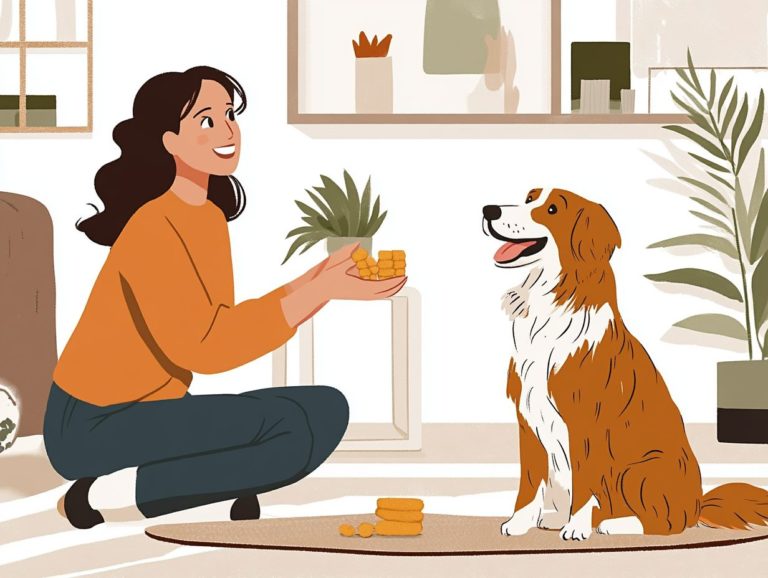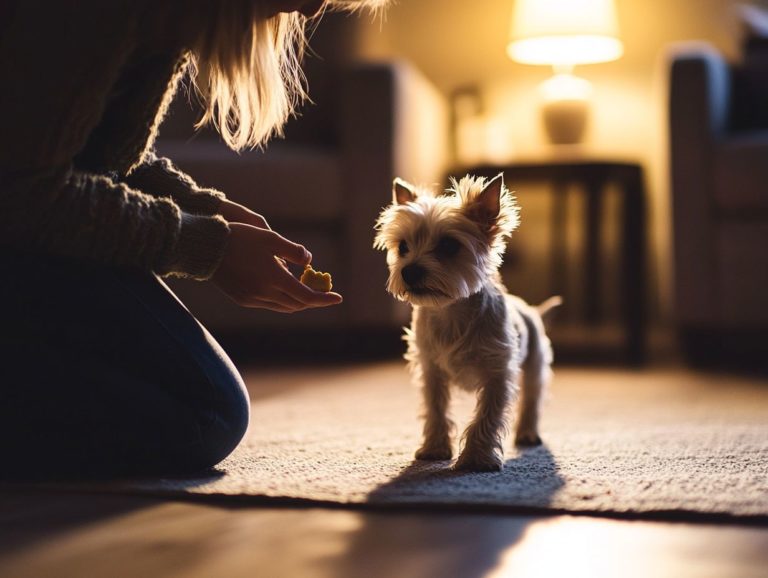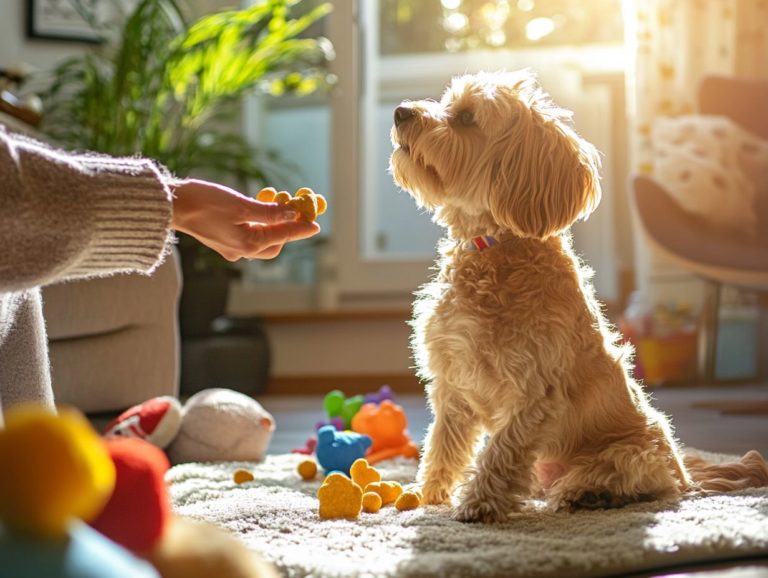Understanding the Impact of Owner Behavior in Training
Training a dog goes beyond mere commands and techniques; it is profoundly influenced by your behavior as an owner.
The way you interact with your furry companion can significantly affect the success of your training sessions. With a plethora of methods at your disposal, it’s essential to grasp the delicate balance between positive reinforcement and punishment methods.
Let’s explore common behaviors that might hinder your training success and how to overcome them! Nurturing a positive relationship can elevate the entire training experience.
Dive in to uncover how your actions can lead to a happier, well-trained pup!
Contents
- Key Takeaways:
- The Role of Owner Behavior in Training
- Positive Reinforcement vs. Punishment
- Common Owner Behaviors that Affect Training
- Unlock Better Training Results: Transform Your Owner Behavior!
- The Impact of Owner Behavior on the Dog-Owner Relationship
- Frequently Asked Questions
- What is the importance of understanding owner behavior in training?
- How does an owner’s behavior affect their pet’s training?
- What are some common mistakes that owners make in training?
- How can an owner’s behavior positively impact their pet’s training?
- What can an owner do to improve their behavior during training?
- How can an owner’s behavior impact their pet’s behavior outside of training?
Key Takeaways:
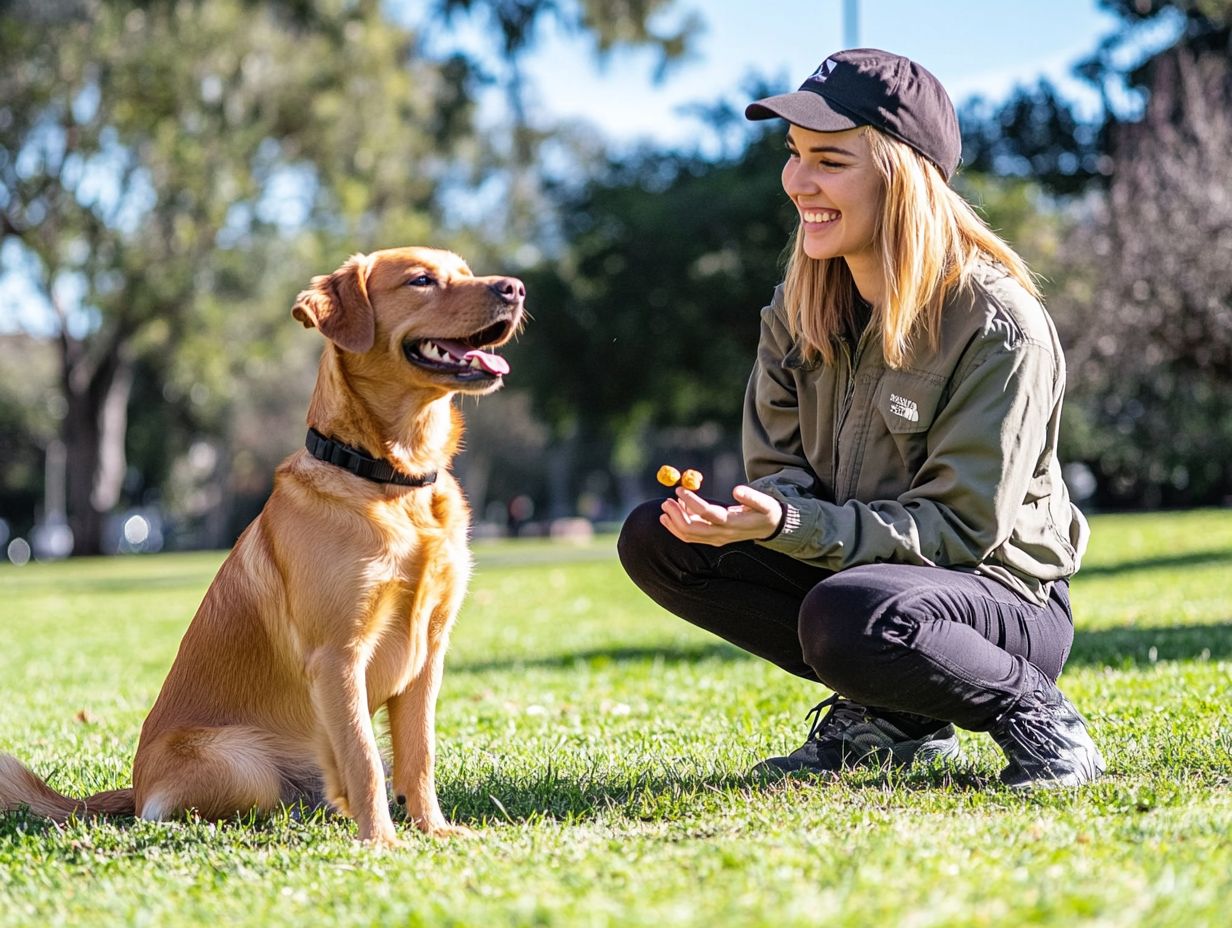
The Role of Owner Behavior in Training
The behavior you exhibit as a dog owner plays a pivotal role in effective dog training. It significantly influences your dog s behavior and the overall outcomes of the training process.
Research indicates that various personality traits such as emotional stability and levels of anxiety can affect the training methods you choose, whether they lean towards punishment methods or positive reinforcement strategies.
Knowing how these factors work together helps you and trainers address common issues like aggression and anxiety effectively while fostering a healthier relationship with your dog.
Why It Matters
Why does your behavior matter? It shapes your dog’s learning experience and emotional wellbeing. Understanding the significance of owner behavior in dog training is crucial.
For instance, consistently employing positive reinforcement like offering treats or praise for desired behaviors can greatly enhance your dog s responsiveness and engagement with commands. On the flip side, inconsistent discipline or harsh corrections can lead to confusion, breeding anxiety and fear, which only exacerbates behavioral problems.
Stay patient and positive! This builds your dog’s confidence and sets the stage for successful training. This approach can also mitigate issues such as excessive barking or destructive chewing. With the right methods in place, dogs can learn to trust you, making the training process more productive and enjoyable for both of you.
Positive Reinforcement vs. Punishment
In the realm of dog training, the debate surrounding positive reinforcement versus punishment is not just a conversation it’s a fundamental discussion that influences training methodologies and profoundly impacts the behavioral outcomes of your canine companion.
Comparison of Training Methods
When you compare dog training methods, you’ll notice striking differences in effectiveness, especially between positive reinforcement and punishment methods. These choices significantly impact long-term behavioral outcomes for your furry friend.
Understanding these methods is vital for any dog owner eager to shape their pet s behavior in the best possible way. Positive reinforcement, where you reward desired actions with treats or praise, builds trust and encourages learning. On the other hand, punishment methods often hinge on fear or punishment, which can lead to anxiety or aggression in your dog.
Consider a case study involving a rescue dog: the use of positive reinforcement not only curbed undesirable behaviors but also boosted the dog s confidence and strengthened the bond with its owner. In stark contrast, a dog trained with punishment methods showed decreased responsiveness and an uptick in stress-related behaviors. This clearly illustrates how critical your choice of training method can be.
Start your journey to a well-trained, happy dog today!
Common Owner Behaviors that Affect Training
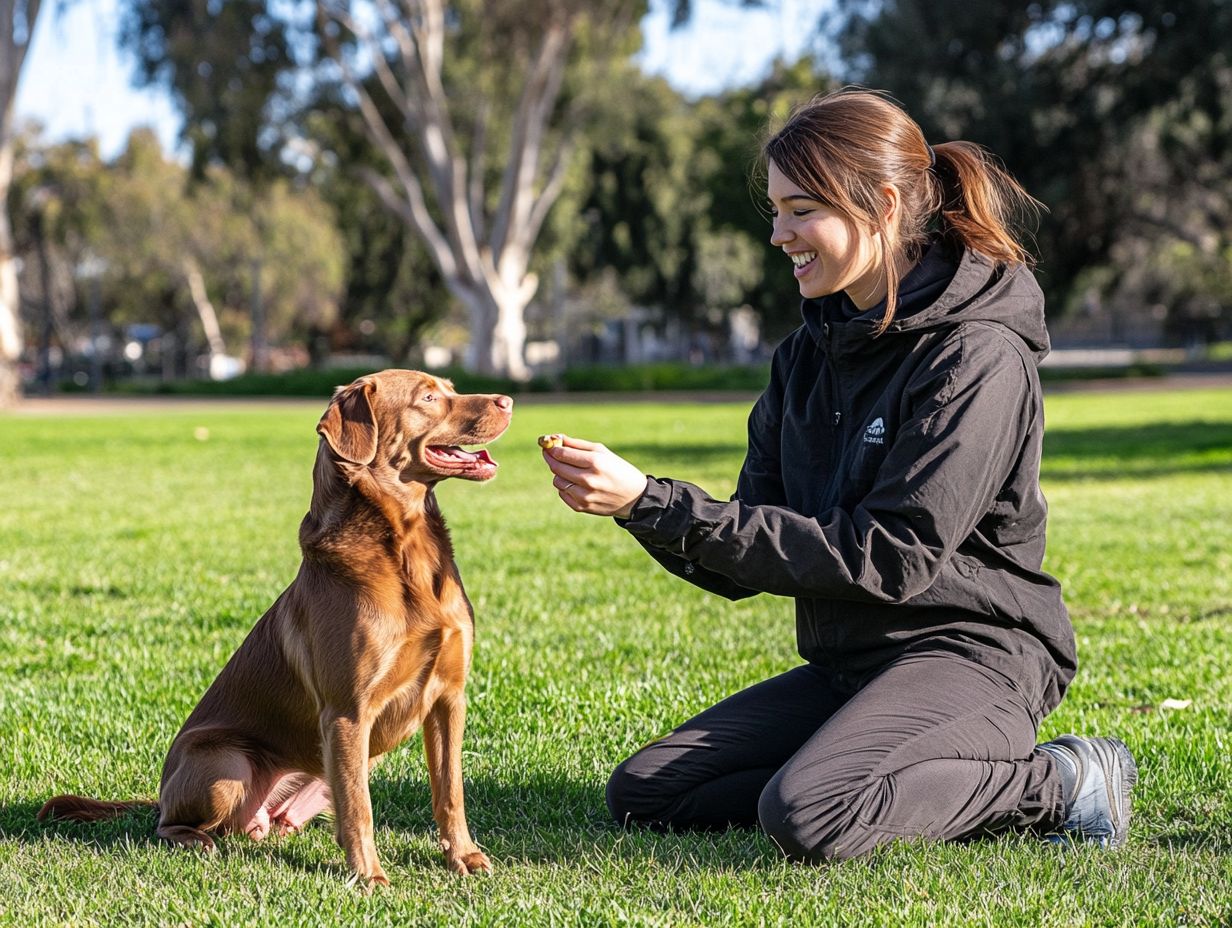
Your behaviors as a dog owner play a pivotal role in the success of training outcomes. It s essential to recognize how your personality traits and consistent engagement significantly influence your dog s behavior and overall training effectiveness.
Inconsistency and Lack of Patience
Inconsistency and impatience can hinder dog training. These behaviors can lead to anxiety and frustration for both you and your dog.
When your commands and expectations shift from one training session to the next, it creates confusion for your dog. For example, if you reward your pup for sitting sometimes but ignore them at other times, your dog may become uncertain about the desired behavior.
This unpredictability can stifle progress and cause miscommunication. Embracing patience in your training creates a stable environment where your dog can learn at their own pace.
By consistently reinforcing positive behaviors and providing clear guidance, you foster an atmosphere of trust and understanding. This approach not only enhances the training experience but also cultivates better behavioral outcomes over time.
Physical and Verbal Aggression
Physical and verbal aggression from owners doesn t just hinder effective dog training; it significantly fuels issues like increased aggression and anxiety in dogs.
When you resort to harsh methods, you create a fear-based environment. This breeds mistrust and complicates the training process over time.
This cycle of negativity can escalate behavioral issues, turning a once-friendly pet into a defensive and unpredictable companion. Instead of falling back on aggressive tactics, consider using positive reinforcement techniques.
By employing methods like clicker training or rewarding good behavior with treats, you can cultivate a trusting relationship with your dog. These approaches not only encourage desirable behaviors but also create a joyful learning experience.
Unlock Better Training Results: Transform Your Owner Behavior!
Enhancing owner behavior is essential for attaining superior training outcomes, especially in the context of puppy training and early behavioral intervention. By implementing strategies centered around rewarding good behavior, you can cultivate a more harmonious relationship between yourself and your dog.
Tips for Positive Reinforcement
Start using these exciting tips for positive reinforcement today to transform your dog training outcomes! Timing is essential; when you reward your dog immediately after they exhibit a desired behavior, you reinforce the connection between the action and the reward.
For example, if your dog sits on command, offering a treat right away makes it crystal clear that sitting is the behavior you value. Mixing up the types of rewards such as treats, praise, or playtime can keep your training sessions lively and engaging.
Consistency is paramount; it s vital for all family members to use the same cues and rewards to prevent any confusion. A case study from a local shelter revealed that dogs trained with positive reinforcement found new homes more swiftly.
This underscores how these strategies not only educate dogs but also enhance their appeal to potential owners.
Start implementing these strategies today for a better training experience for you and your dog!
Managing Frustration and Stress
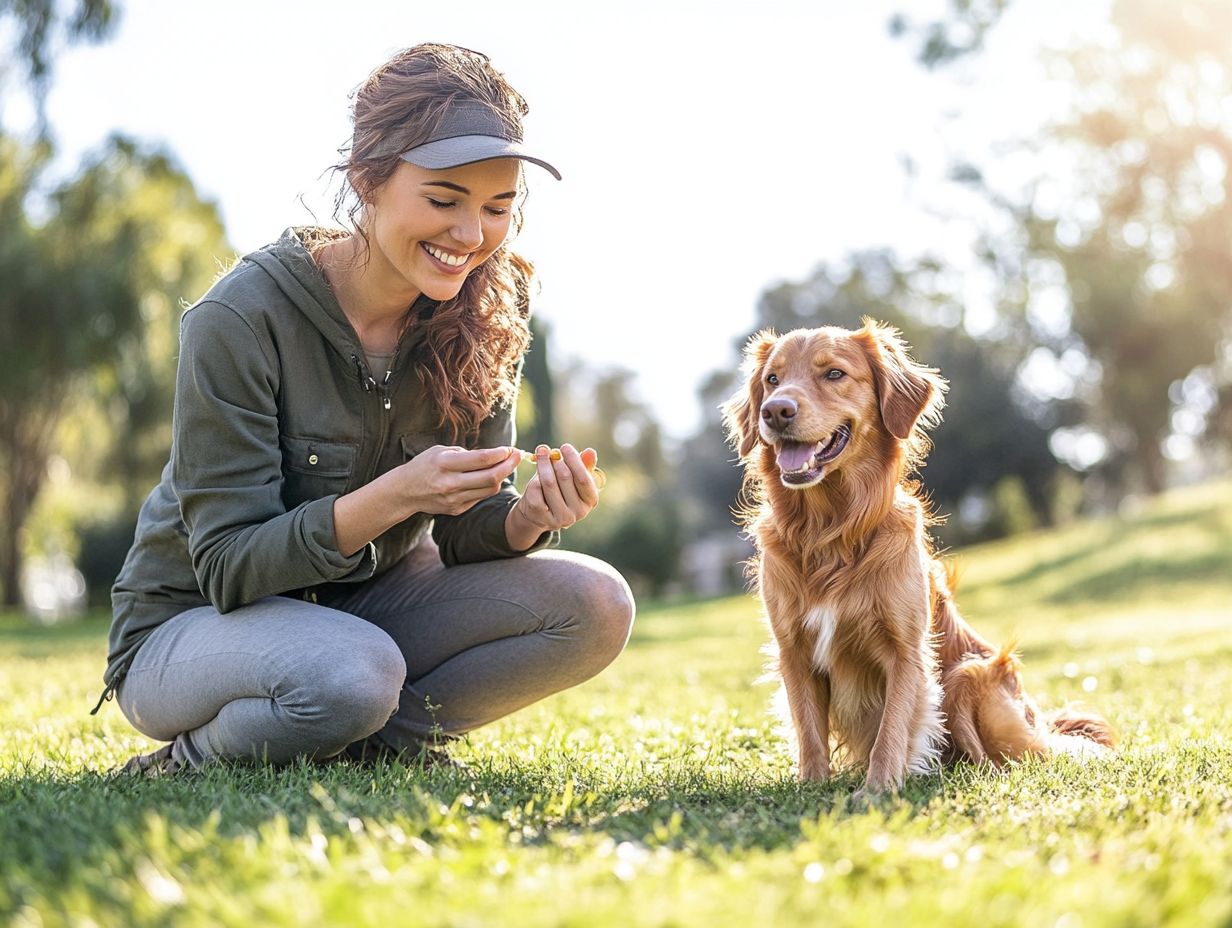
Managing frustration and stress is crucial for dog owners. Your emotional state greatly influences both training outcomes and your dog’s well-being.
By using simple calming practices like deep breathing and meditation, you can create a calm training environment. These practices help reduce anxiety and foster a positive atmosphere for effective learning.
Taking regular breaks helps both you and your dog stay focused and energized. Your calm demeanor during training builds a strong connection and leads to enjoyable sessions.
The Impact of Owner Behavior on the Dog-Owner Relationship
Your engagement with your dog shapes your relationship. Positive interactions build trust and lay a strong foundation for effective training methods.
Building Trust and Bonding Through Training
Building trust with your dog is essential for a fulfilling ownership experience. A strong bond enriches your time together.
Use positive reinforcement to encourage good behavior. For example, reward your dog with treats or praise when they sit on command.
Consistent practice helps develop obedience and fosters a sense of security. One owner shared how their shy rescue dog blossomed through play and clicker training.
These stories show that training is about more than skills it’s about building meaningful relationships.
Maintaining a Positive Relationship
A positive relationship with your dog enhances training and boosts happiness for both of you. Effective communication is key.
Using clear commands and body language helps you understand your dog’s needs. Gentle reassurance can ease anxiety during training.
When you approach challenges with patience and empathy, you nurture a harmonious bond. This ultimately leads to a well-adjusted and confident companion.
Being consistent in your routines strengthens this bond and provides your dog with a sense of security.
Frequently Asked Questions
What is the importance of understanding owner behavior in training?
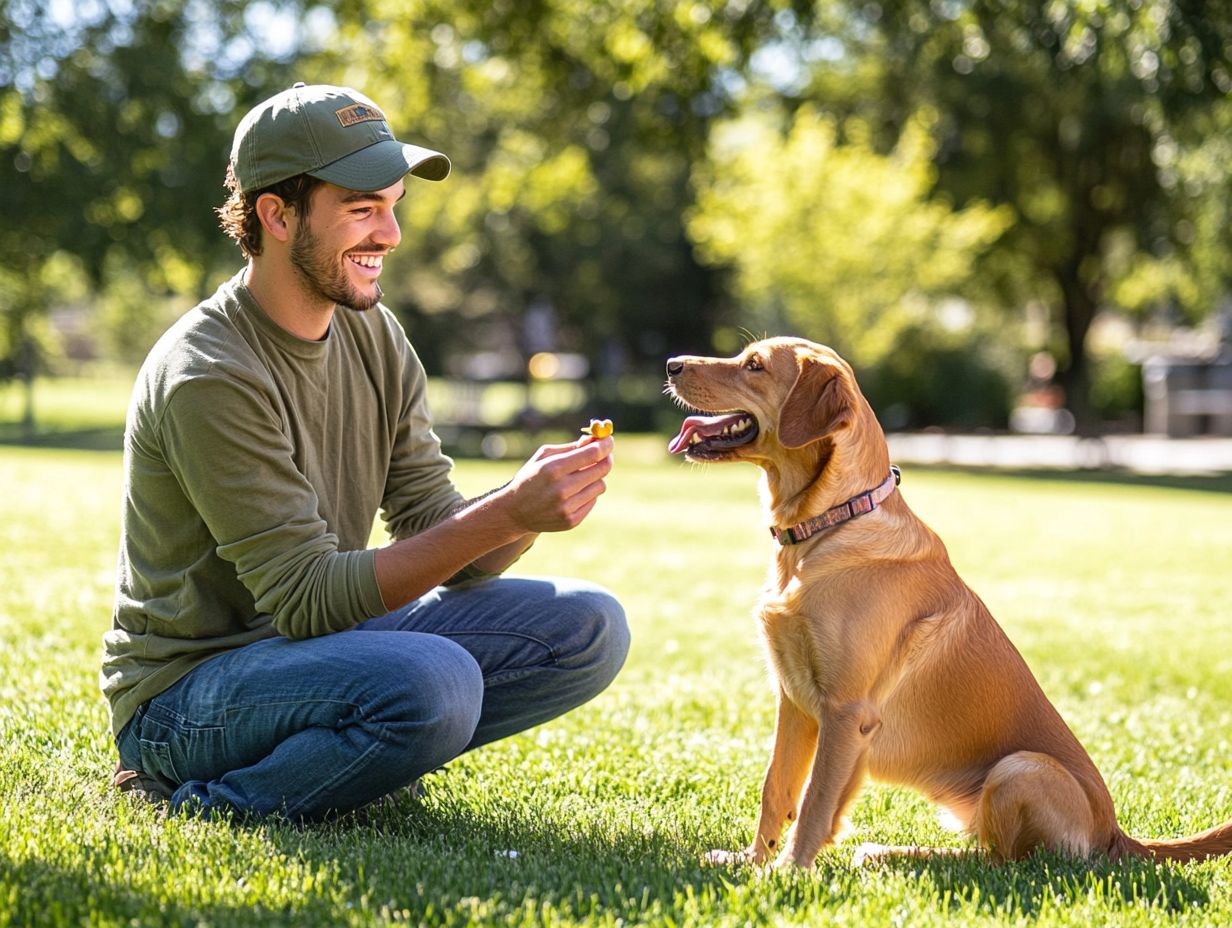
Understanding owner’s behavior is vital in training. Your actions and attitudes impact your pet’s learning success.
How does an owner’s behavior affect their pet’s training?
Your behavior influences your pet’s training significantly. A patient owner helps their pet learn, while an impatient one may confuse them.
Moreover, a negative approach can induce fear or anxiety, complicating the training process.
What are some common mistakes that owners make in training?
Common mistakes include inconsistency, impatience, and punishment. Inconsistent training confuses pets.
Impatience leads to frustration and stress. Punishment, like yelling, creates fear and damages trust.
How can an owner’s behavior positively impact their pet’s training?
Owners can make a difference by being patient, consistent, and using positive reinforcement. These qualities help pets understand commands and motivate them to learn.
Being calm, confident, and knowledgeable creates a positive learning environment for pets!
What can an owner do to improve their behavior during training?
Owners can educate themselves on effective training techniques. Learning to be patient and consistent is key.
Using positive reinforcement and avoiding punishment makes a significant impact. Consider seeking guidance from a professional trainer!
How can an owner’s behavior impact their pet’s behavior outside of training?
An owner’s behavior greatly influences their pet’s actions beyond training. When owners are consistent and use positive reinforcement, pets are more likely to behave well.
Inconsistent or negative approaches can lead to troublesome behaviors. Let s ensure your pet shines at all times!

